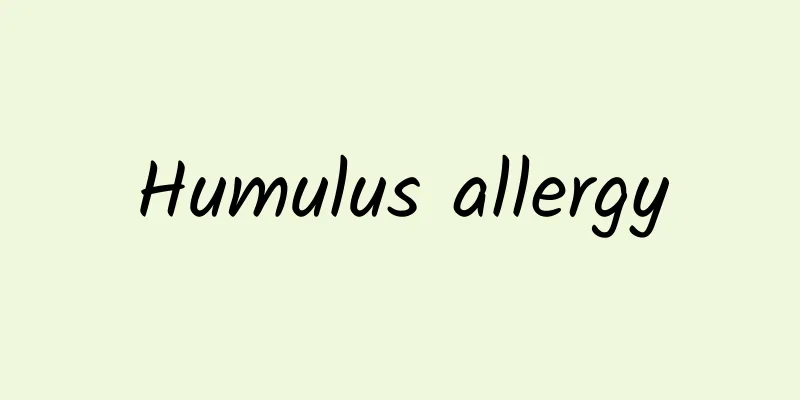Humulus allergy

|
Grass is a traditional Chinese medicinal material that can inhibit bacteria, clear away heat and reduce internal heat, etc. However, grass also has some side effects. For example, some people will experience skin allergies after using it. Therefore, skin allergies are one aspect of the side effects of grass. For some people, the side effects of grass are that after large doses of injection, they may experience hematuria. Therefore, we must be extra careful and try to avoid the side effects of weed. Humulus can cause skin allergies One of the side effects of grass is that it may cause skin allergies. Especially those who are allergic to willow catkins should avoid it when the grass is blooming. Some children will continue to sneeze, shed tears, have nasal congestion, cough, etc. after touching the egret grass. Some may also experience chest tightness, shortness of breath, and breath holding. At this time, it is easy to treat fever, cold, asthma, etc., which can easily lead to delayed illness. In this case, you need to immediately use allergy treatment drugs, and when the symptoms are alleviated, you need to use preventive drugs. ?Using large amounts of grass may cause hematuria If ? grass is used in a safe dosage, there are generally no adverse effects. However, if the dosage is doubled, breathing difficulties and fever may occur, and in severe cases, death may occur. People who inject large amounts are very likely to develop diabetes and hematuria, so you need to be careful. ?The side effects of grass often occur and are closely related to the amount used. The side effect of grass is mainly skin allergy, and large-scale use can easily cause some risks. When using ?cattle to inhibit bacteria and remove toxins, you must also pay attention to the occurrence of side effects. Try to choose and use it effectively under the guidance of a professional doctor to reduce or avoid side effects. |
<<: Can Solanum nigrum be eaten?
>>: Xanthium sibiricum pictures
Recommend
Are autonomous vehicles generally more reliable than human drivers? | Technology Weekly
Compiled by Zhou Shuyi and Wang Xiang In most sce...
Wake up! It's time to go to work! This guide to getting back to work is specifically designed to treat "post-holiday syndrome"
With the end of the May Day holiday, everything i...
The efficacy and function of Dabaiyao
Do you know about Dabaiyao? It is a common medici...
The efficacy and function of crisp
Su is a common type of Chinese medicine. It has m...
The efficacy and function of scutellaria baicalensis
Traditional Chinese medicine requires the use of ...
The efficacy of Lingzhi Fuling Yam Soup
The efficacy of Lingzhi Fuling Yam Soup As the sa...
What kind of river is the Tarim River? Learn more in this article →
“Tarim River, the river of my hometown, how many ...
A stunned bird fills a monitoring gap for a species
"The release into the wild lasted 75 days, w...
The efficacy and function of Chinese medicinal material Poria cocos
Poria cocos is not the Poria cocos cake we often ...
The efficacy and function of persimmon parasite
As for Persimmon Parasite, I think some people ma...
The strange metal that is "both strong and flexible" makes it possible to build super-strong artificial muscles for transformable aircraft and robots!
Author: Li Chuanfu Shi Xiangqi With the rapid dev...
What are the benefits of drinking Artemisia capillaris soaked in water?
Artemisia capillaris is a relatively common Chine...
The efficacy and function of mountain twig kernel
Shanzhiren is a very good medicinal material. Sha...
The efficacy and function of Tiger Lily root bark
Tiger lily root bark is a very common Chinese med...
What are the uses of jute
Jute is a long, soft, lustrous vegetable fiber th...









